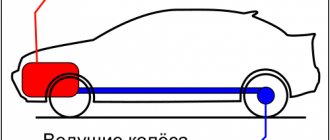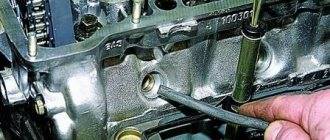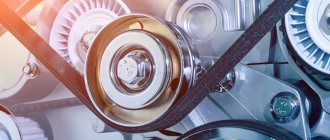The variator, also known as continuously variable transmission, has been known since the 50s. However, this approach only became widespread in the 90s. This is a very simple system, which is abbreviated as CVT. If we consider its functionality, then there will not be too many differences from other solutions. But the operating principle of this solution turns out to be radically different, and changing gears here does not give any impetus.
After all, the leading and adjacent disks have carefully adjusted diametrical planes. They allow the car to accelerate without jolts, ensure smoothness, and without the need for the driver to be distracted.
The system ensures fuel economy, because it independently selects the desired mode. The amount of time required for acceleration is also reduced. And the variator does not make noise, no matter how loaded the engine is. However, is this the only advantage that such a solution has? It is worth considering in detail the variator, the pros and cons of which are not known to all car enthusiasts.
Advantages of a CVT
Many are interested in the CVT gearbox, the pros and cons of this option, its disadvantages and advantages. Let's start our discussion with the advantages. They are very obvious:
- There are no jerks during acceleration;
- Fast speed dial;
- The car does not stall in traffic jams or when rolling;
- Even high speeds do not produce noise;
- Less fuel consumption;
- Eco-friendly solution;
- Increased engine life;
- The motor power is realized in the best possible way;
- Improved grip during acceleration;
- Does not slip on ice or wet asphalt;
- The most comfortable conditions for the driver are created.
CVT gearbox, pros and cons - the other side of the coin
However, there were also some negative traits. So, the following negative points should be noted:
- Inability to maintain high speeds for a long time;
- The importance of regular maintenance - changing filters and oil every 30 thousand km;
- CVTs require the use of a special fluid with regular replacement, and it is not cheap;
- An aggressive driving style and sudden braking quickly damage the equipment;
- It is possible to use a CVT only with a car power of up to 220 hp;
- Expensive repairs and the problem of finding competent specialists who can do it with dignity;
- Any sensor that breaks can damage the gearbox.
Rules for the use and prevention of automatic transmissions and CVTs during operation
The CVT is designed for comfortable, quiet and family-friendly metropolitan driving. For sporty and fast driving, an automatic transmission is more suitable. This is another solution to a problem from the category: “What are the differences between an automatic transmission and a CVT.”
Automatic transmission is an unpretentious gearbox. But when operating a CVT, the car owner must comply with the following rules:
- when stopping on a descent, use the handbrake;
- switch the rocker positions from “P” to “R” only after the car has come to a complete stop;
- tow only at neutral speed and no more than 80 kilometers at a speed of 30 kilometers per hour;
- change the oil on time;
- when 70 thousand km have been traveled, replace the belts on the pulleys;
- warm up the transmission in winter before starting;
- Diagnose problems and repair your vehicle only in qualified service centers.
Read
Automatic transmission diagnostics and repair
The same applies to the automatic transmission, with the exception of replacing belts. Proper operation and high-quality care of the gearbox will ensure a long service life of the device.
The importance of CVT oil
If we discuss such a topic as the pros and cons of a CVT transmission, reviews from experienced motorists will clearly show that a lot here depends on the driver himself. After all, almost all the shortcomings of this element can be minimized with the right attitude towards it. So, one of the most important aspects is oil. It needs to be maintained and frequent replacement is absolutely necessary.
After all, it is the oil that protects the parts and prevents slipping. It is inexpensive, and the documentation for the car helps you make the right choice. Proper replacement is also important. If you have any doubts, it is better to contact a specialist so as not to risk the unit. And even if somewhere the permissible interval between replacements is indicated at 60 thousand km, in practice in Russian conditions it is necessary to make a complete replacement every 30 thousand.
Loads and what is associated with them
As already noted, the variator does not tolerate overloads. It is necessary to get rid of the habit of abruptly changing the load, you should ride smoothly. Here you will have to give up your sports style, and perhaps even retrain yourself. But there are no other solutions, since this shortcoming of the variator has not yet been corrected. He is sensitive.
If you are going to drive in cold weather, you should definitely warm up the engine, spending a few minutes on it. A quick start on oil that has thickened from the cold can be fatal.
Warm up the variator like this. You need to put the car in neutral for 5 seconds to warm up the clutch. Then the car warms up for a couple of minutes. And the first kilometers of the journey must be passed without a serious increase in speed. It is worth remembering that the colder it is outside, the longer it will take to warm up. If the temperature is below -35 degrees, you should either refuse the trip or drive in a gentle mode.
Towing
If you need to tow another car, you should seriously consider it. After all, a CVT car is not designed for this at all. In this situation, serious damage can occur. The same applies to slipping.
By studying the vehicle's operating instructions, you can find a suitable towing method. You must follow the directions carefully and remember that even then there is a risk. This is especially true for used cars.
Speaking about slipping, the following can be noted. If the car is stuck, it is better to call for help and not try to solve the problem on your own. Otherwise, the spline connections may fail due to wear. This will also affect the life of the gears. As a result, you will again face costly repairs.
Mechanical Differences
The CVT and automatic transmission are the same in that both options are a type of gearbox that is controlled by an electronic device built inside the box. The difference is in the design features.
VKPP
VKPP in technical documentation is designated as CVT (CVT). This is an abbreviation for the English words: “Continuously Variable Transmission”. In Russian it sounds like this: “constantly changing gears”
The difference between a CVT and an automatic is in the structure of the mechanism. The first difference that generalizes all CVTs is in the principle of operation: the absence of gear steps. Speeds change due to the gear ratio. The latter is controlled by parallel cone pulleys. This is a driven and driven mechanism.
There is also a difference in the fastening of the pulleys. Some pulleys in a vehicle's CVT box are connected to each other by means of metal chains, others by means of belts.
The variator works on the principle of moving pulleys apart and bringing them closer together. These actions lead to a change in the gear ratio. And changing the number accordingly changes the speed of the car.
Read
The design and principle of operation of an automatic transmission
An example of the operation of a V-belt variator in the form of a table:
| Vehicle speed | Locating the pulley in the variator space | Diameter that the belt goes through |
| Low gear (first speed) | Maximum spread | Small |
| High gear (fourth speed or higher) | Maximum shifted | Big |
Attention! The operating principle of a toroidal variator is to change the roller in relation to the friction disc. These differences will be discussed in the next block.
CVT types
The variator has two types of gearbox:
- V-belt. This variator consists of two pulleys and a belt connecting them. It is so named because the moment the pulleys are connected, the belt becomes V-shaped. The pulleys move by means of a hydraulic drive;
- Toroidal. This type of variator consists of rollers and coaxial disks. When the gear changes, the position of the rollers also changes.
But the difference between a variator and an automatic transmission lies not only in design features. CVT boxes have their positive and negative sides.
Disadvantages and positive qualities of CVT
The positive aspects of the variator are the following features:
- smooth movement of the car, without jerking;
- immediate response to changes in the route landscape: slope, country road;
- there is no slowdown in speed with an instant increase in load, unlike an automatic transmission;
- simple design and light weight;
- saving gasoline.
But no matter how much one lists the positive aspects of a gearbox without gear shifting, a vehicle with a CVT still has disadvantages:
- rapid wear of internal CVT equipment (the belt must be changed every 70,000 km);
- the vehicle is not able to move on hilly terrain due to the unsuitability of the variator for heavy loads. Not installed on SUVs;
- Service centers do not repair the variator due to the shortage of spare parts and the complexity of repairs, but only replace one box with another. The gearbox itself is expensive;
- It takes some time to switch the movement back or forward, which cannot be said about the automatic transmission. Many drivers don't like this.
Attention!
Therefore, when choosing a variator, you need to understand that it is short-lived, unlike an automatic.
Automatic transmission
In addition to the variator or robotic gearbox, an automatic transmission is installed in the car. The difference is in the complexity of the design, but it is more durable. This is the main difference between a CVT and an automatic, which is why many experienced car owners buy a car with an automatic transmission.
Read
Typical problems and repairs of automatic transmission f4a42
An automatic machine, unlike a CVT, consists of the following parts:
- torque converter;
- centrifugal pump;
- overrunning clutch;
- locking clutch;
- planetary gearbox.
The torque converter acts as a clutch and facilitates smooth gear shifting. The automatic transmission gearbox is responsible for the joint operation of all gears.
Types of automatic transmission
The difference between an automatic transmission and a CVT is that an automatic transmission has several gear shift stages:
- four-stage. First released in 1930 and used on some cars;
- six-speed, seven-speed and currently they are already producing cars with a 9-speed automatic transmission. Used on all modern cars.
Defects and positive qualities of automatic transmission
An automatic transmission has its disadvantages and advantages. The positive aspects of a car with an automatic transmission include:
- when stopping on a hill, the car will not reverse;
- reliability;
- comfort in management.
Disadvantages of the machine:
- there is no smoothness when changing gears while accelerating the car;
- expensive maintenance;
- It is not possible to start the engine from a pushrod.
Despite the negative aspects, an automatic transmission works much longer than a CVT.
Analysis of comparison of two boxes
The differences between a CVT and an automatic are not only in the writing of the names of the boxes in technical documents:
- A or AT – abbreviated name of the machine;
- CVT is the name of the variator.
Their differences are noticeable from the following points of view:
- economic;
- reliability;
- appearance.
Read
Basic modes and why you need an overdrive button on an automatic machine
Sensors and related
The problem with sensors is also relevant, and they need to be monitored. It is important that they are always in good working order. A problem with the functioning of at least one of them will affect the entire unit.
So, for example, if problems arise with the speed sensor, then the transmission belt goes to its middle position. This is fraught with serious deformations. In this case, any excess speed or jerk will lead to its rupture. If you buy a used car of this type, be sure to examine the condition of the sensors, and do not consider them something of an afterthought.
Visual identification of CVT and automatic
Novice car enthusiasts have no idea how to visually distinguish a CVT transmission from an automatic transmission. Although there are many differences between them:
Read
DIY Nissan Juke automatic transmission repair
- CVT transmissions are usually labeled “CVT”;
- gear shift names near the scenes. On CVTs, in addition to standard PRND, there is an “L” mode. Automata have L2, L3;
- It's almost impossible to do this with a lever. In addition, unscrupulous owners replace the variator lever with a lever from an automatic transmission if there are significant differences.
In addition, how to distinguish them externally, the buyer of a car needs to be a driver: drive about five hundred meters in a car. When the car accelerates on an automatic transmission, the sound will be identical to the sound on a manual transmission.
If you put the vehicle on the rise of a hill, then with the CVT gearbox the car will roll back.
Attention! The last method will work when the car does not have a rollback system installed.











